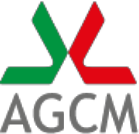VARIE TV - INQUINAMENTO ACUSTICO
PRESS RELEASE
PRESS RELEASE
The leading television networks have been found liable of infringing the law prohibiting noise pollution
At the end of investigation that began as a result of a complaint filed by the AssoAcustici Association, the Competition Authority has found the television broadcasters TMC 1, RAI 1, RAI 2, RAI 3, Rete 4 and Italia 1 liable for having broadcast television commercials and jingles between 7 p.m. and about 11 p.m. on 1 October 1999 at volume levels above those of the normal broadcasts, in violation of section 12(1) of law No 447/95. The commercials and the jingles broadcast by Canale 5 in that time slot could not be assessed, because the video cassette submitted together with the complaint had been recorded at signal saturation levels which made it impossible for the expert to find the necessary evidence.
Despite the generic wording of the law banning noise pollution caused by TV commercials and jingles, the Competition Authority applied the quantitative criterion used in the Act, and bearing in mind the fundamental need to prevent television broadcasters from behaving improperly, causing the viewing public understandable irritation and distress, and reached the conclusion that the complaint was fully justified, and hence ordered the broadcasters to cease committing these infringements. It also ordered them to submit to the Authority, within 90 days of the date of service of the order, a detailed report on the measures, procedures and instruments that had been adopted specifically to prevent their commercials and jingles from being broadcast in future at a higher volume than that of the ordinary programmes.
At the same time the Authority reported that the rules introduced to limit the sound levels of commercials and jingles were totally inadequate to prevent them from occurring.
For section 12 of law No 447 of 26 October 1995 prohibited the broadcasting of "jingles and commercials at volumes above the ordinary sound levels of TV programmes" and provided that the supervision and the penalties should be "introduced pursuant to legislative decree No 74 of 25 January 1992", which governed the offenjce of misleading advertising. No regulation for its implementation was ever subsequenbtly introduced, with the result, as the Authority indicated in its report, that no explanation has ever been given regarding the methodology and the basic technical parameters to be used for measuring variations in the sound levels.
For a long time, and on a number of occasions, the Authority has notified Parliament and the Government of this situation, emphasizing that the powers vested in in by section 12 of law No 447/95 appear to be ineffective, because they refer to a matter that belongs to an area that is outside the scope of competition law and the control of misleading advertising. At the present stage in the current Parliament, the only proposal for amending section 12 is the one set out in Bill No 1138 (governing the Communications system) through a government amendment which correctly makes the Communications Regulatory Authority responsible for overseeing compliance with the rules governing noise pollution.
This being so, the Competition Authority reiterated in its measure that it hoped that measures would be enacted laying down uniform technical criteria and parameters to be used in future to enforce the law prohibiting excessively loud radio and television commercials and jingles.
Rome, 17 August 2000

